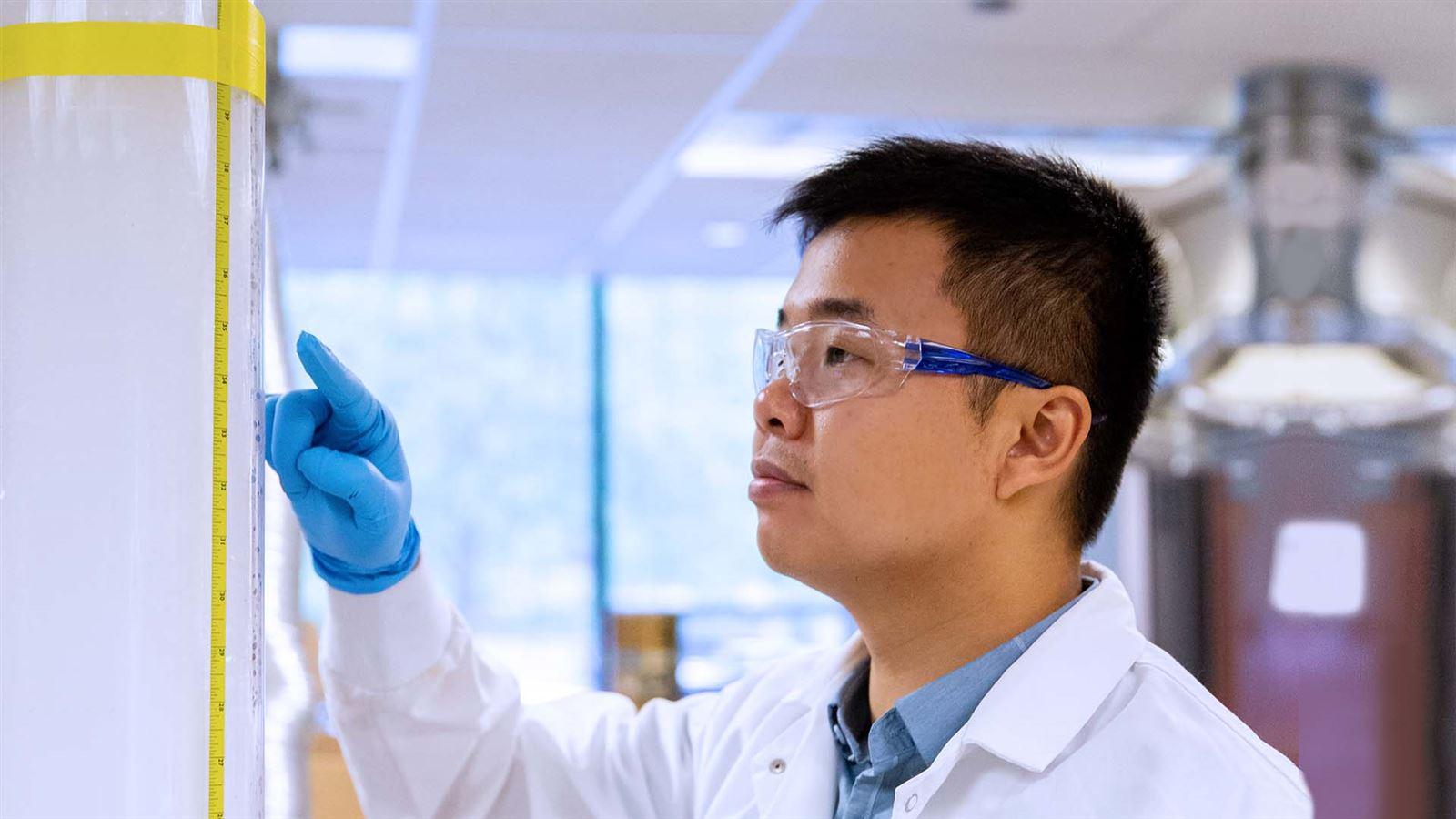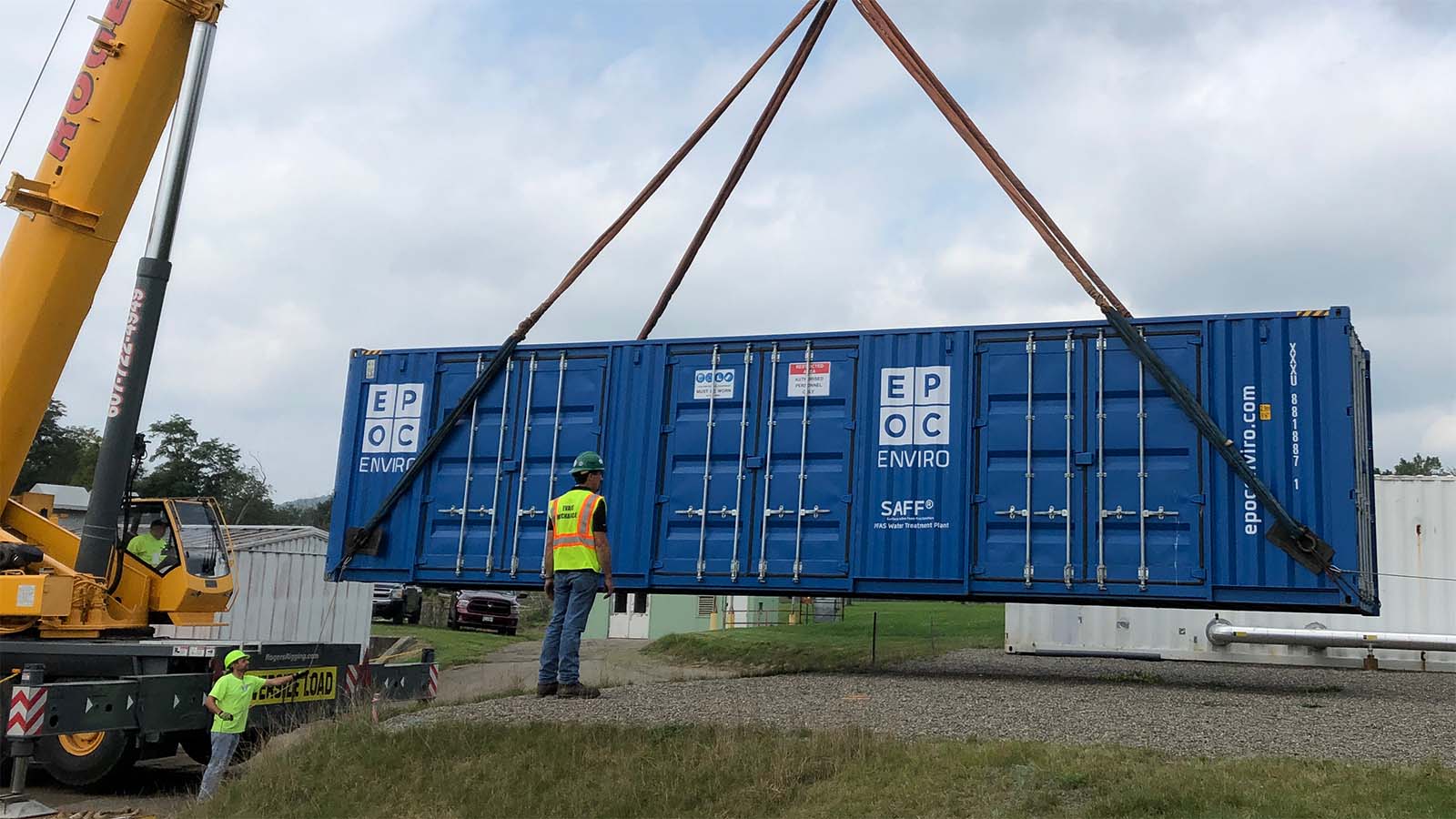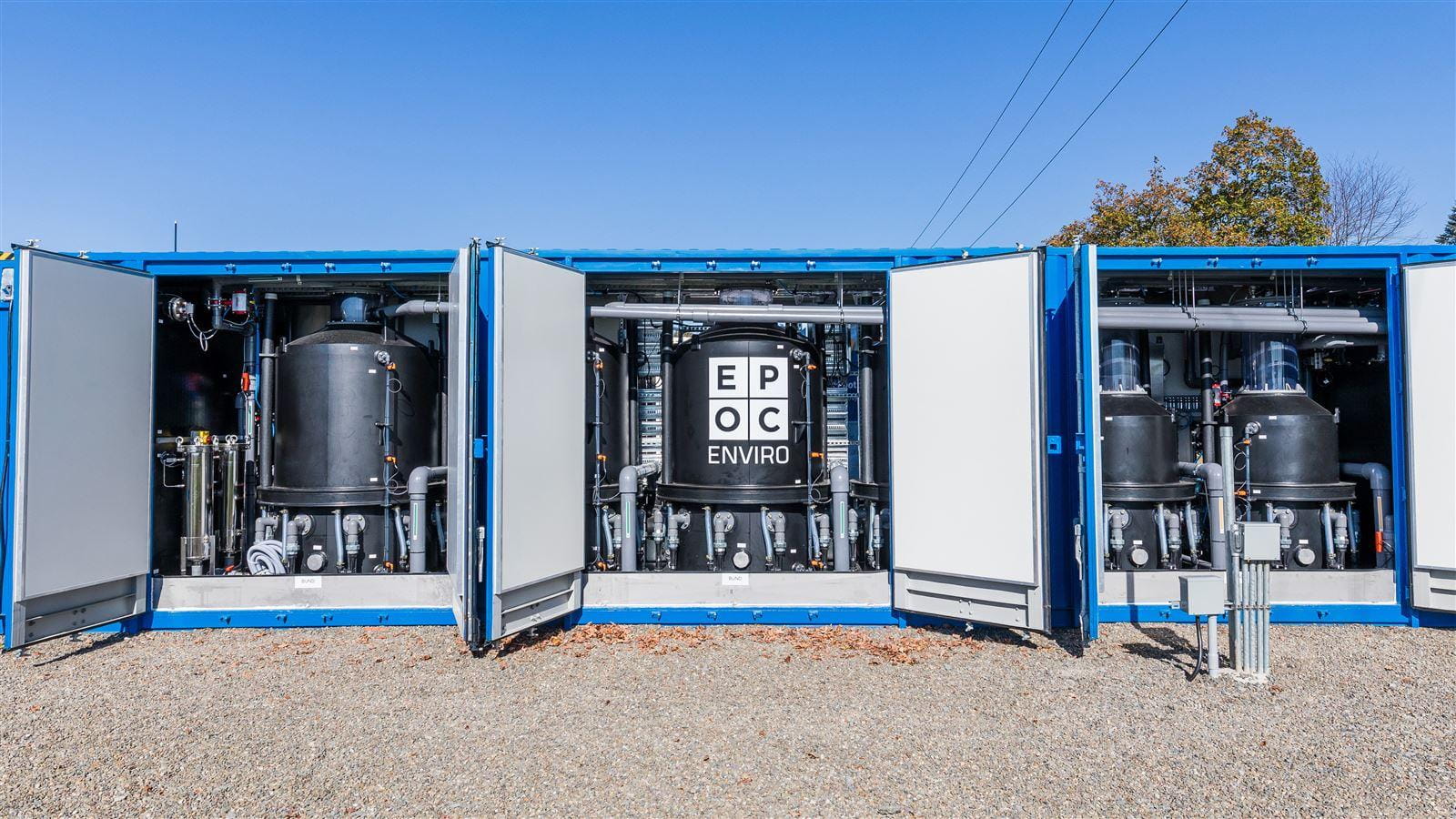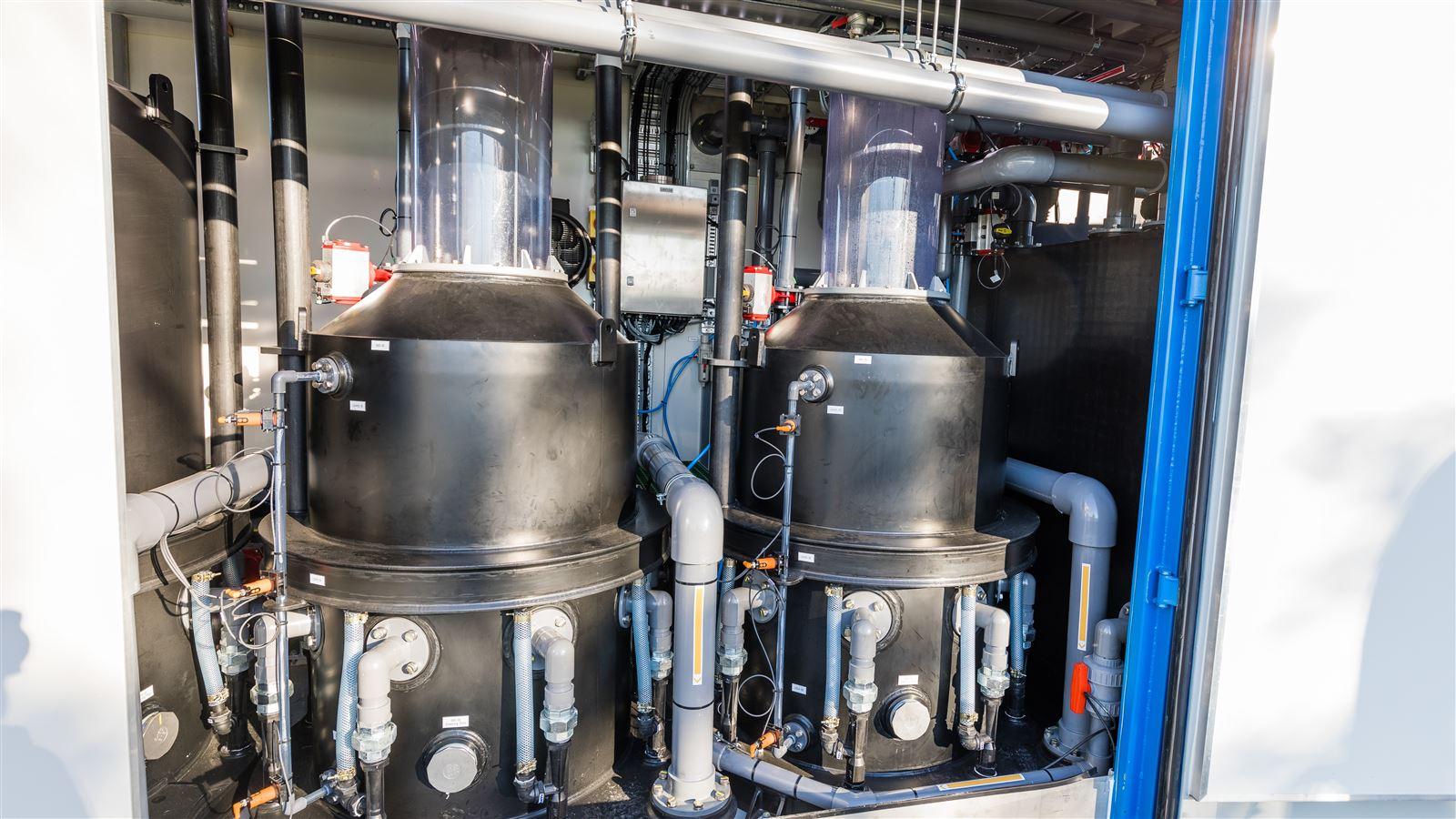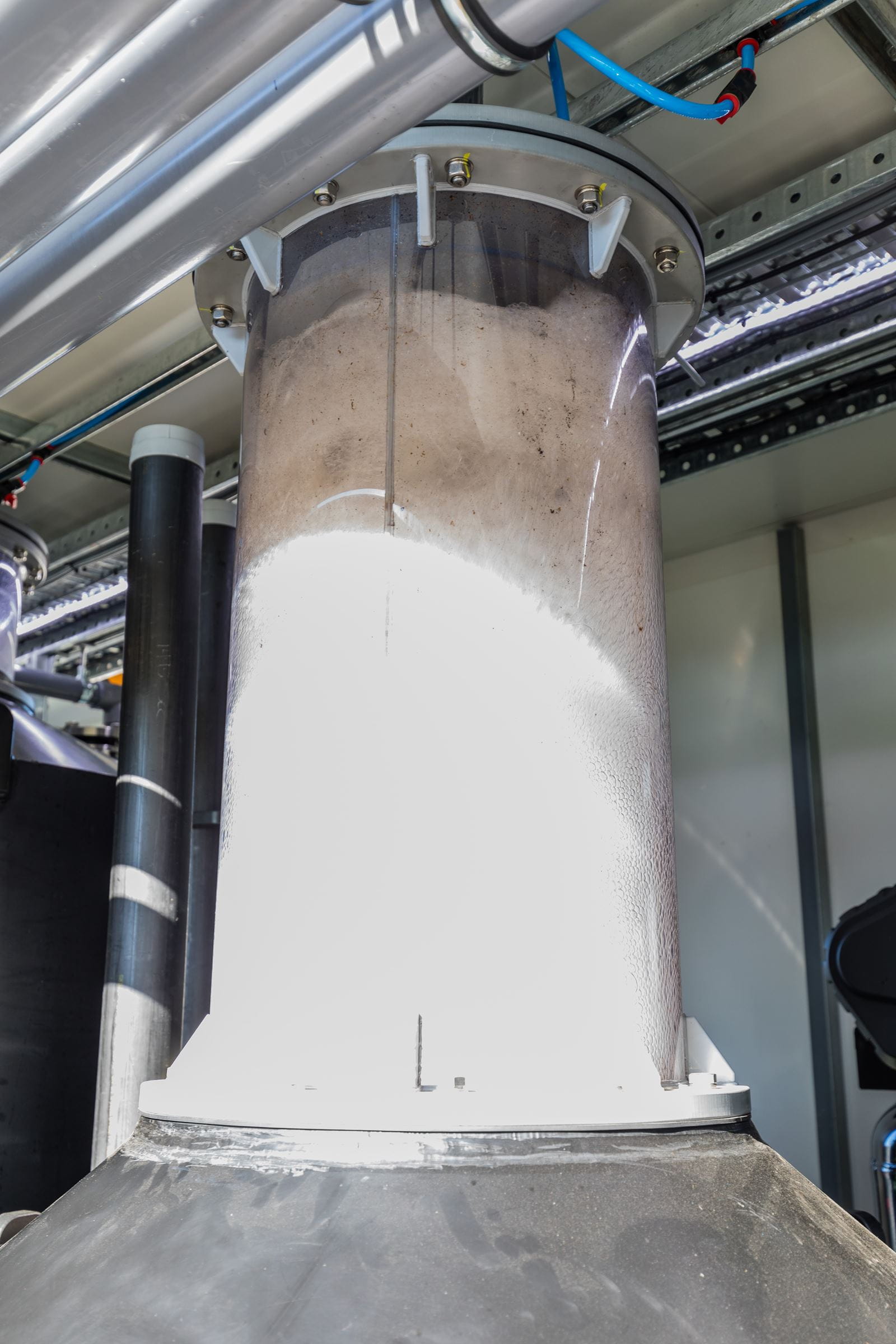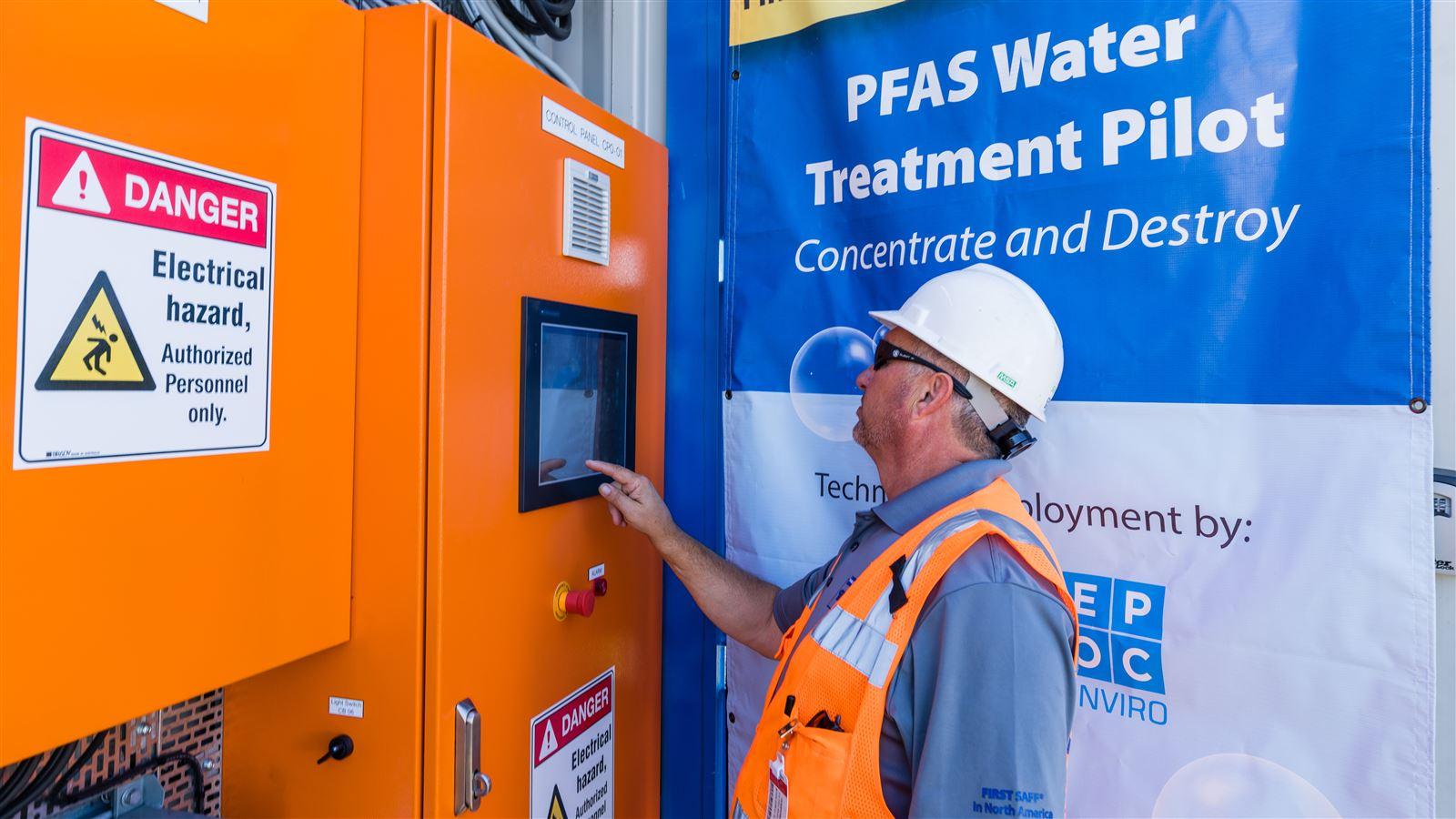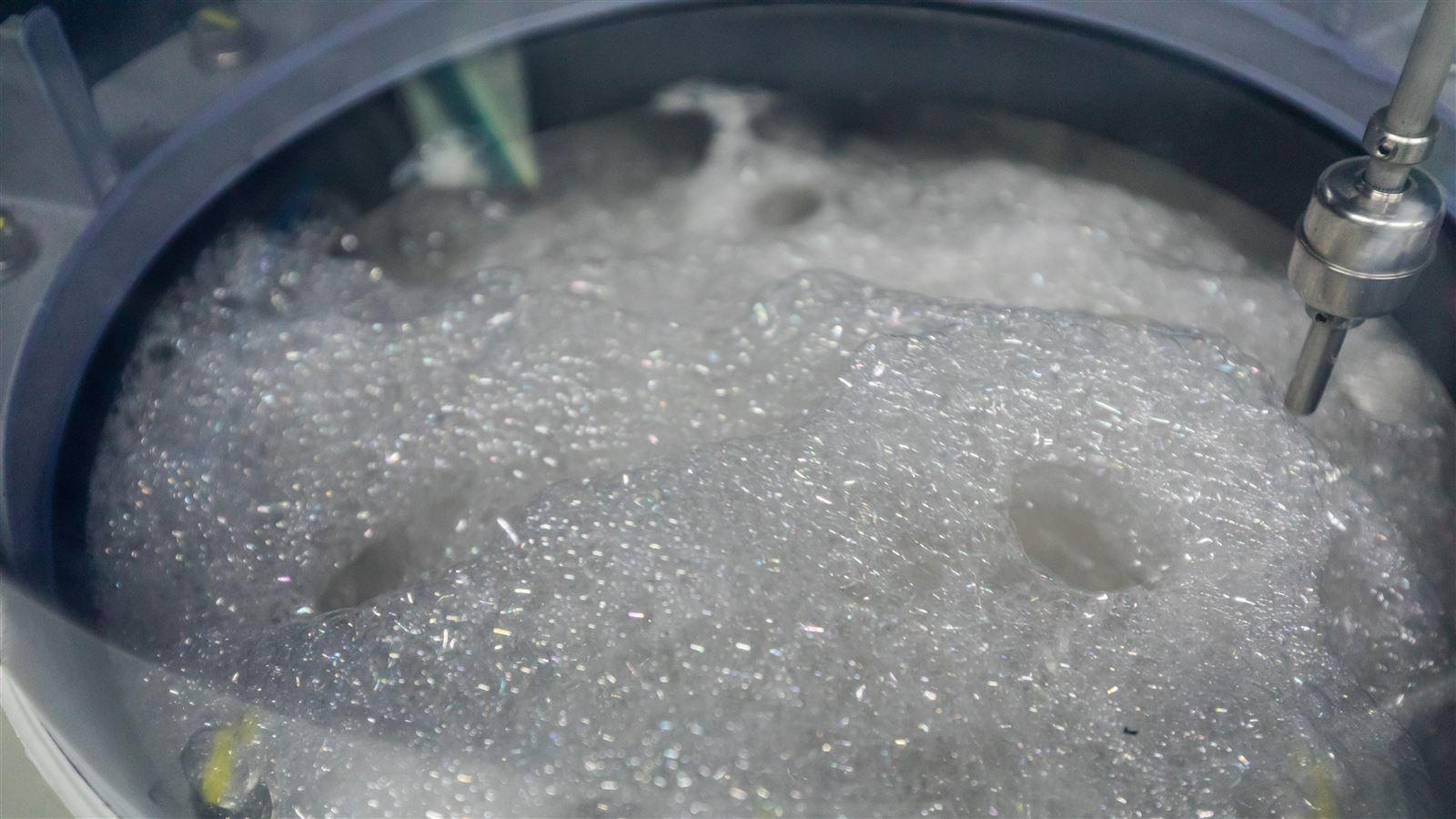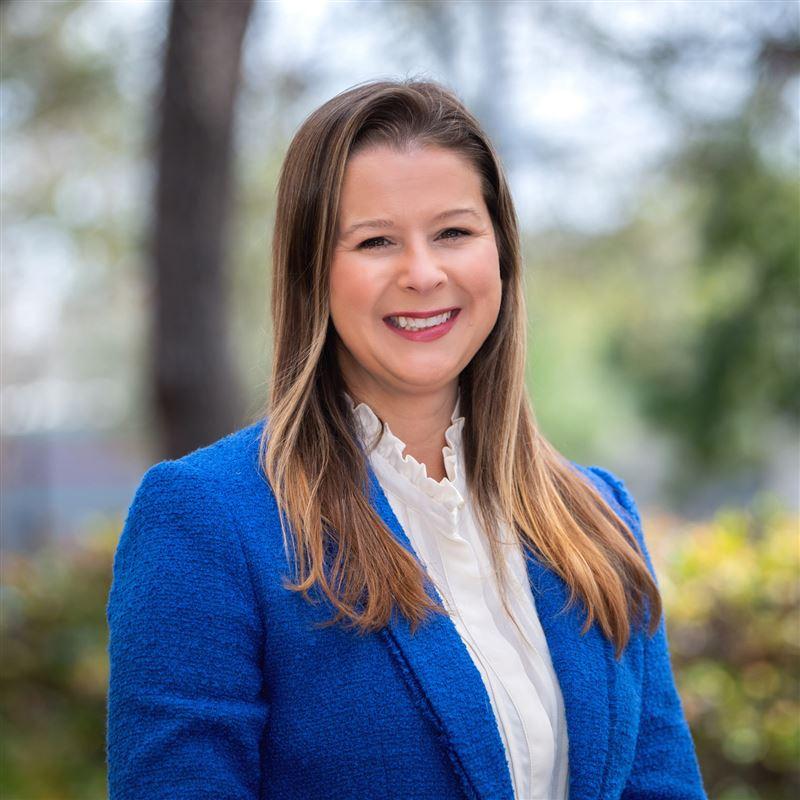New PFAS Treatment Fights PFAS with Natural Foam Fractionation
Together with EPOC Enviro, CDM Smith scientists have been rigorously testing a new treatment train that targets PFAS, one that can separate and concentrate the compounds using a naturally-occurring process called foam fractionation. EPOC Enviro’s Surface Active Foam Fractionation® (SAFF) system is a mobile, ex-situ shipping container capable of reducing the equivalent of an Olympic-size swimming pool down to a single cup of PFAS concentrate. The technology has proven so promising that CDM Smith and EPOC are piloting this treatment technology throughout the U.S. It is the first deployment of its kind and holds incredible potential to treat very high concentrations of PFAS at source points like industrial manufacturing plants, fire training areas and landfills.
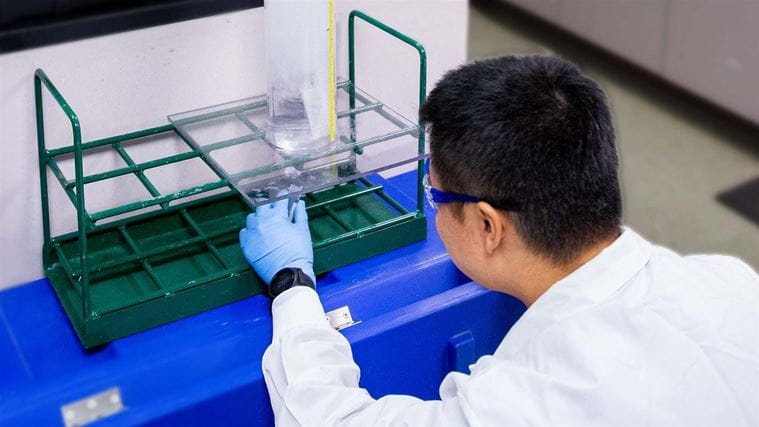
How does it work?
Surface foam can occur naturally, like in the case of decomposing organic plant matter rising to an air-water interface. Or, it can be a sign of pollution. In Michigan, the Department of Environment, Great Lakes and Energy fields enough inquiries related to clusters of potentially toxic foam that it added a “Foam Sighting Form” to its website. In areas where high levels of the compounds have entered local waterways, that foam is potentially concentrated PFAS.
This happens because all PFAS share a strange chemistry: a hydrophilic head (highly soluble) and a hydrophobic tail (water repellent). When PFAS collide with pockets of air underwater, the air bubble traps the tail, and the molecules rise to the surface to collect as foam.
Several years ago, recognizing that nature had already perfected its own way of separating and concentrating PFAS molecules, scientists at CDM Smith’s Research and Testing Laboratory theorized that foam fractionation could be employed as a field-ready PFAS separation technology. For it to work, they would need to find an efficient method of skimming off and collecting the foam. CDM Smith found a promising partner in EPOC Enviro, known elsewhere around the world as OPEC Systems, who was developing a three-stage foam fractionation system of their own.
SAFF® produces a relatively low volume of PFAS concentrate, which is further polished by a low-pressure evaporation process that distills and reduces the effluent into a PFAS hyper-concentrate. For every megaliter (264,172 gallons) of water treated, the SAFF® system produces only a few quarts of hyper-concentrate thereby dramatically reducing overall disposal costs.
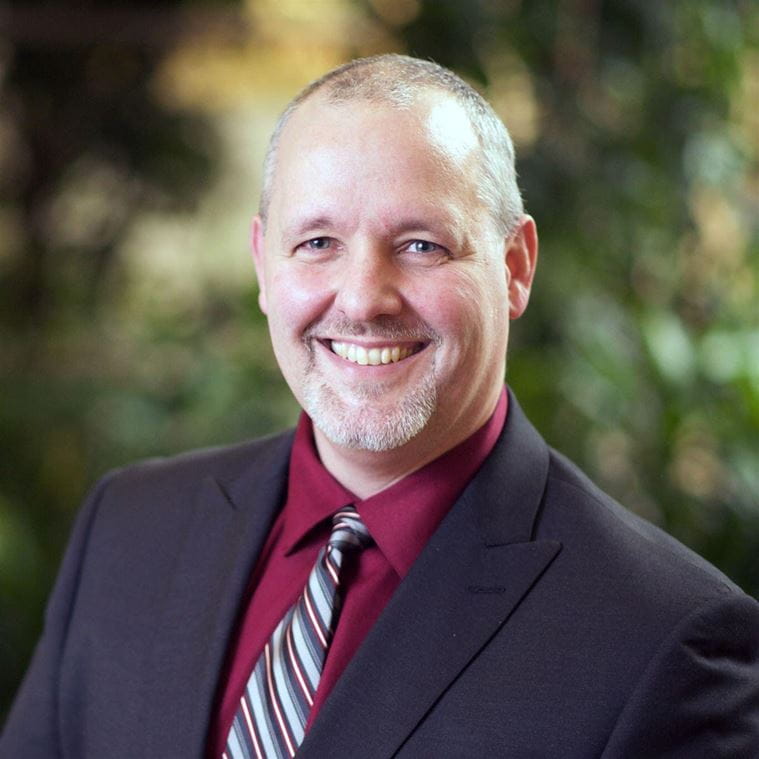
The future of PFAS is about options: optimizing upstream treatment technology, reducing downstream waste generation, and destroying PFAS.


What's Next?
CDM Smith recently announced that SAFF had arrived in North America for the first time, on its way to one of several scheduled pilot project sites. The unit is now up and running, generating flocs of foam. Early reports have been positive, and CDM Smith will continue piloting SAFF in a range of settings.
To find the best use for this treatment train, consider the benefits:
Sustainable: No chemical addition needed
Destruction-ready: Generates smaller effluent, less energy needed to destroy
Economical: Low price-per-gallon treated
Powerful: Efficiently treats high concentrations of PFAS
For these reasons, CDM Smith researchers are validating foam fractionation as a PFAS treatment option for wastewater reclamation facilities, in-situ groundwater sites, landfills and investigation-derived waste, among others.
Foam fractionation effectiveness can vary—depending on the rate of aeration, water quality, PFAS chain lengths, bubble density and sizes, foam collection effectiveness and the targeted concentration factor to reduce the foam volume.
For more information and to coordinate a demonstration, contact our PFAS team.

